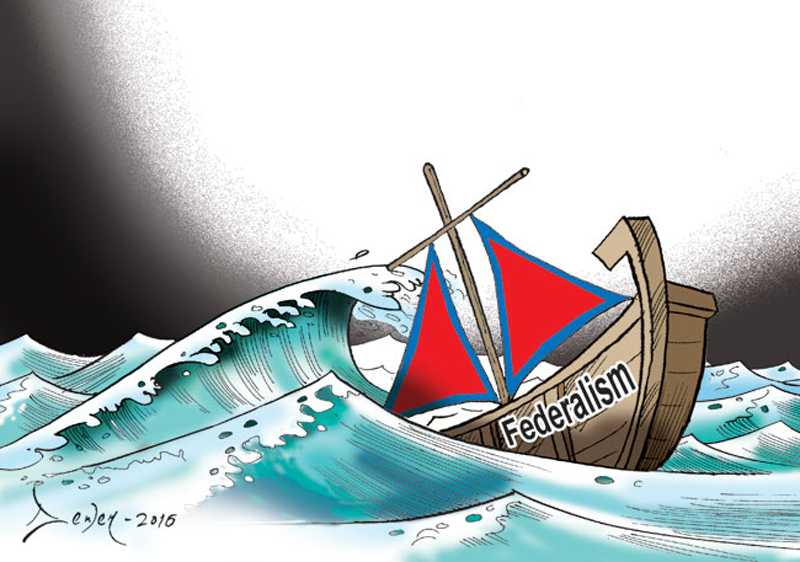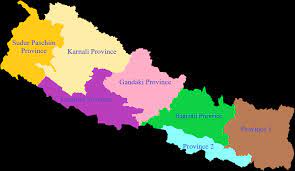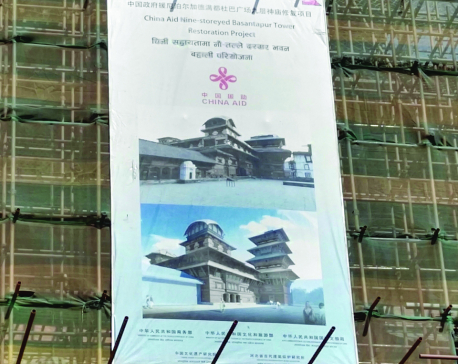
OR
Opinion
First Five Years of Federalism in Nepal
Published On: April 25, 2022 04:39 PM NPT By: Dr Khim Lal Devkota


Dr Khim Lal Devkota
(The author, an expert in federalism, is a member of the National Assembly.)news@myrepublica.com
More from Author
The greatest achievement of federalism is peace. There is peace throughout the country. We can simply compare the situation of terror during the conflict period and the situation now. If there were no peace in the country, then perhaps nothing would make sense.
Nepal passed through an unprecedented period in its history for a decade due to the armed conflict initiated by the then CPN (Maoist). About 17,000 people were killed, thousands were injured and thousands others were displaced in the conflict that began in 1996. The rural areas were under effective control of the Maoist rebels for years while in the urban areas, ordinary people lived under terror as a result of the activities of the army, police and the rebels.
After the Maoists entered the peace process for a negotiated settlement, a fresh movement began in the Madhesh region, the country’s southern plains. Thousands of people of hilly origin were displaced from Madhesh. As the political leadership in the country reached political deals to address grudges and political aspirations of the people, Nepal witnessed unique political changes that only a few countries in the world have experienced. The country was transformed from a 240-year long monarchical system into a democratic republic and federalism was embraced renouncing the centuries-long unitary system in the country.
The state structure of the country has since undergone phenomenal changes as a result of federalism. The state power has been divided between the three levels of governments in the new federal system of governance. Seven provinces and 753 local governments have come into existence in the new set up. A section of people have raised questions about these newly-created structures in the federal set up. Why do we need seven provinces in a country with a small population and small geography? Why are there so many parliamentarians and ministers? These are some of the key questions raised by the people. We have not been able to adequately answer them. The first question has been raised while making reference to neighboring India. There are only 36 provinces in India even as the country has a population of about one and a half billion. Why do we need seven provinces even as we have less than 30 million population? As a neighboring country, it is natural to link the context of Nepal with India.
However, it is not entirely justifiable to look at the example of India alone. Let's also look at Switzerland, a country a little further away. Switzerland is the oldest federal country that was transformed from a unitary structure to a federal one in 1848. Its geography is a little larger than our Karnali province. The population is 8.7 million-- nearly one fourth of the total population of Nepal. However, there are 26 provinces/cantons. A question worth asking here is: why are 26 cantons/provinces needed in such a small country? The areas of the cantons vary from 37 km2 to 7,105 km2and the population ranges from 16,000 (AppenzellInnerrhoden) to 1.5 million ( Zürich). The area of Switzerland's largest province is about the same as our smallest province. Their most populous province is like our least populous province. However, the Swiss citizens do not complain that there are more provinces than needed. These facts confirm that geography and population do not play a significant role in determining the number of provinces.
As evident in Switzerland, the issue of federalism is, therefore, not the number of provinces, but the solution of political issues. What is then the rationale behind embracing federalism with provinces if the central government, local bodies and other structures that existed before the country adopted federalism failed to solve the problem. The number of provinces is a matter to be decided on the basis of justification and need of the country and political consensus. If there are any problems in the implementation of federalism and the operation of the provinces, it is necessary to find ways to improve and address them. But it is certainly not the time to look for alternatives.
Why do we need federalism?
Why did Nepal embrace federalism? Or, why did the countries that embraced the unitary system of governance transform into federations? This question is also linked with the basic question about federalism. In the 20th century, many unitary-based countries moved to federalism in an attempt to address internal strife and dissatisfaction. For instance, Spain has moved to a federal state structure to empower the autonomous regions. In the process of managing the decades-long armed conflicts, not only Ethiopia but also Sudan, Congo and Iraq adopted federalism. India, which was mostly integrated by the British, embraced a federal system of governance on the basis of social, cultural, linguistic and geographical factors. India initially had just 14 states, but this number has now reached 28 states and 8 union territories.

The United States of America embraced federalism in 1776 with the intention of allowing independent and sovereign states to conduct matters of common interest through mutual consent and agreement. The USA has a joint structure of independent states, especially with the aim of promoting trade and national security. The situation is similar in Switzerland. With the aim of preserving and promoting the autonomy and cultural diversity of its cantons, Switzerland entered into federalism in 1848. Germany also became a federal state in 1949 through independent decision-making by Landers and mutual agreement.
A fundamental aspect of federalism is the division of state power between the center and other federal units. In the federal system of government, the political, administrative, economic, judicial and other rights of the country are divided among federal units. According to the preamble of the Constitution of Nepal, federalism has been introduced to ensure economic equality and social justice by eliminating geographical, cultural, regional, class, ethnic, linguistic, religious, gender and other forms of ethnic untouchability and to build inclusive democracy through proportional, inclusive and participatory methods. Irrespective of their demographic and geographic size and economic status, a total of 29 out of nearly 200 countries in the world, including Nepal, have embraced the federal system of governance.
Achievements of federalism in Nepal
There have been some tangible achievements since the country embraced federalism. The sub-national governments (Province and Local) have come into existence. Despite adverse circumstances followed by the outbreak of the COVID-19 pandemic, the sub-national governments have made some noticeable achievements. Provincial and local governments have been closer to people in terms of addressing their needs. With the institutionalization of the Federal Democratic Republic system, sovereignty of the people has been exercised by the elected representatives. The provision of the proportional representation electoral system enshrined in the federal constitution has paved the way for increasing the representation of women in all sets of governance systems. As per the Inter-parliamentary Union, an organization representing parliaments from around the world, women’s representation in the parliament of India, China and the US is 15 %, 25 % and 28 % respectively. In Nepal, it is 34%. Women's representation in Nepal's parliament is more than double that of India. At the local level, women's representation is 41 percent. The institutional set up of the previous governance system has been changed. More than half of the civil servants have been adjusted at the sub-national levels.
Most of the development offices centered in the district headquarters have reached the local level. There are some ministries, departments and institutions centered at the federal level. Institutional restructuring and staff adjustment have already taken place. High-ranking civil servants rarely work in the far-flung areas of the country. But now they are compelled to move to the subnational levels. Going down by high-ranking employees also means taking the services to the doorsteps of the people. We should not forget the fact that local level elections, which could not be held for 20 years, were made possible only after the federal set up.
Prior to the federal structure in Nepal, the internal revenue of all local bodies was less than Rs 10 billion. At present, the local level has reached the position of mobilizing internal revenue of about Rs 40 billion. The local levels, which could hardly make a budget of Rs 3 million, are now in a position to make a budget of over Rs 1 billion. Increasing the size of internal resources and budget also means a qualitative leap in development and service delivery. The resources of the centralized state have become constitutionally decentralized due to federalism.
Federalism has also helped people to become more self-reliant. Before federalism, citizens had to go to the district headquarters and the capital city to receive various services provided by the state. Currently, about 70 percent of the tasks are done at the local level. In addition to this, citizens are able to receive services from the local governments. Accountability towards citizens has increased. The powers and rights seekers in the past are now in a position to give rights to others. Those who knocked at the doors of the National Planning Commission and the Ministry of Finance for resources are now in a position to distribute resources by themselves.
During the conflict period, most people in the rural areas left their homes. Thousands of civilians were displaced even during the Madhesh movement. However, with the implementation of the federal system of governance, peace has returned to the country. The problems of the citizens are now shifting to the sub-national governments level. Before federalism, the central government had to deal with the small problems of grassroots people. Probably, if there was no change in the country, the local levels would still be without the people's representatives.
Federalism should not be viewed in absolute terms. Before federalism, there was a predominance of certain castes, communities in the state-running mechanism. It has improved since the implementation of federalism. In addition to this, at present there is competition among the subnational governments in the areas of development and construction and service delivery. The powers of the central level have reached the subnational level. The service centers have reached close to the people. How much did it cost to reach the district headquarters and the capital city from the remote villages and how much does it cost now? Let's calculate the cost of federalism along with the service flow from the center to the bottom level.
The greatest achievement of federalism is peace. There is peace throughout the country. We can simply compare the situation of terror during the conflict period and the situation now. Even the people of the capital city did not sleep well. Let's compare peace with the cost of federalism. No matter which policy system we adopt, its main goal is development, prosperity and good governance. Even more important is peace. If there were no peace in the country, then perhaps nothing would make sense. We should now focus on making the system less expensive and more flexible. Due to federalism, stability and peace has been established in the country. For those who understand, federalism is a piece of cake, while for those who do not, it is a burden.
Room for reforms
If all three levels of government work within the limits set by the constitution, there is no need to worry about cost management. The federal government must abandon the centralized mindset. There is no need to have a bigger institutional structure at the center. The country’s police organization has not been adjusted according to the federal set up yet and this delay will hold the provinces back. They will also keep the police in their own strength to fulfill their constitutional responsibilities. In order to minimize the cost to sustain the federal system of governance, half of the existing manpower of Nepal Police and Armed Police Force must be transferred to the provinces. More than half the functions are gone down, why do we need larger sets of civil servants and other human manpower at the center?

Another important thing that needs immediate intervention is improving the federal system of governance by reducing the number of ministers in the provinces. The number of ministers should be limited to 10 percent of the Provincial Assembly members. For this, an amendment to the constitution is necessary. Similarly, problems have arisen even in the absence of a Civil Service Act, due to which the complexity of staff management at the sub-national government level has surfaced. This has disrupted the service flow of these entities. There are rumors that the government is going to bring an ordinance in this regard, but the ordinance should be brought keeping in view the interest of the citizens rather than the interest of the employees. Despite the aspirations of the people for peace, good governance, development and prosperity through the new system, the work has not been done accordingly. The pace of law making is equally slow.
It is natural for citizens to expect a lot from federalism. However, due to the abrupt dissolution of the House of Representatives twice in the last three and a half years, some major problems have also arisen in the implementation of federalism. Even after the restoration of the House of Representatives, parliament has not been functioning properly. The main opposition has been obstructing parliament for more than six months. The changes seen in the political scenarios of the provinces have also adversely affected the functioning of federalism. It is necessary for parliament to be active for the consolidation of federalism. If parliament becomes functional, a number of processes including law-making can be expected to gain momentum.
Nepal's federalism is based on the principles of coordination and cooperation, which, if assimilated, will help in its strengthening. There are various methods of empowerment. The most appropriate tool is the activation of inter-province councils including the Provincial Coordination Council, Sectoral Thematic Committee, etc. The constitution provides subnational level functional responsibilities to the subnational government but the hands and feet of these governments are still tied. In Canada, even though the local level is under the province, all works related to local service delivery and infrastructure development are carried out by the local level. In Germany, 92 percent of university functions are carried out by Province/Lander. In Nepal, the province has the right to higher education and provincial universities. Ironically, the federal government continues to open universities even five years after the implementation of federalism in the country.
In Switzerland, there is a practice of involving provinces/cantons in discussions and decisions on foreign policy. In our case, even while deciding issues that will seriously affect the provincial level, there is not even general discussion. For example, while deciding on the issue of 'Kaligandaki Diversion Canal', the then Oli-led government did not even hold discussion with the Gandaki Province. None of the province governments were informed about the decision regarding the extraction of stone, sand and ballast. Then Prime Minister Oli had inaugurated 240 local roads that apparently fall under the jurisdiction of the sub-national governments. This makes the problem of coordination evident in the implementation of federalism in Nepal.
All these things clearly demonstrate that the federal government is not positive and honest about the implementation of federalism. The rights delegated by the constitution to sub-national governments have not been implemented honestly. In this context, a resolution proposal has been registered in the National Assembly for the implementation of federalism. However, the resolution has yet to be deliberated due to continuous obstruction in parliament by the main opposition party. This must be discussed in the next session of parliament. If it is passed and implemented, there will be a big change in the implementation of federalism.
Conclusion
Undoubtedly, no system of governance has positive aspects only. Problems arise when political leaders are not honest and fail to demonstrate professional integrity. It is unfortunate that a situation has arisen in which our federal system of governance has been called into question in a short period of time mainly due to the 'bad' leaders of political parties. There is plenty of room for improvement. We have experienced a varied system of governance including Rana rule, autocratic monarchy and constitutional monarchy. Nepal is making an experiment of federalism after passing through all these kinds of governance.
There is no denying that federalism has not yielded the expected results due to the lack of good guardianship. In the areas of staff management, law and institutional structure building, capacity building, fiscal transfers in a proper way , etc. should be carried out in a coordinated manner. We no longer have the option of strengthening and consolidating federalism by tackling all sorts of problems. If there is only strong intergovernmental relations, effective fiscal federalism, successful administrative federalism, activism in law making and promptness in service delivery, then there will be no major problem in the implementation of federalism. If the organs of the state related to these subject areas become sensitive, the common citizen will feel the change, and will help to resolve or minimize contradictions related to federalism.
In order to ensure the success of federalism, the federal government should not be stingy in fulfilling the guardianship seen at the sub-national levels. The sub-national levels also need to pay sincere attention to the implementation of federalism. There is no need to panic or feel frustrated in the implementation of federalism even as there are some ups and downs. Things could change a lot if political parties turned honest enough in the implementation of federalism.
(The author, an expert in federalism, is a member of the National Assembly.)
You May Like This

Federalism: learning by doing
Issues have emerged regarding effective implementation of federalism. But there is a long way to go and these issues can... Read More...

Alleyway to Beijing
Centralization of all authority in Baluwatar continues unchallenged. Federalism is slowly being turned into a farce. Fundamental freedoms are... Read More...

Shabby and unsporting
Given the size of the record-large Nepali contingent to Asian Games in Indonesia, the medal tally was solitary silver from... Read More...





Just In
- NRB introduces cautiously flexible measures to address ongoing slowdown in various economic sectors
- Forced Covid-19 cremations: is it too late for redemption?
- NRB to provide collateral-free loans to foreign employment seekers
- NEB to publish Grade 12 results next week
- Body handover begins; Relatives remain dissatisfied with insurance, compensation amount
- NC defers its plan to join Koshi govt
- NRB to review microfinance loan interest rate
- 134 dead in floods and landslides since onset of monsoon this year












Leave A Comment